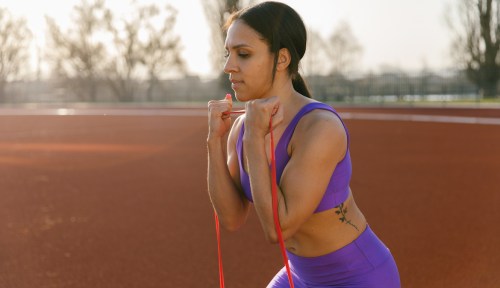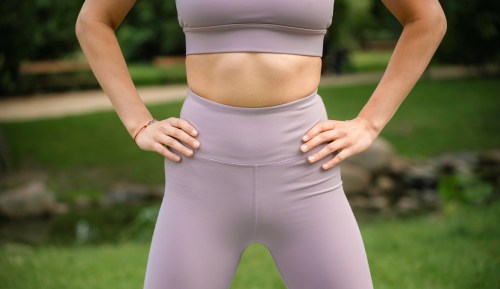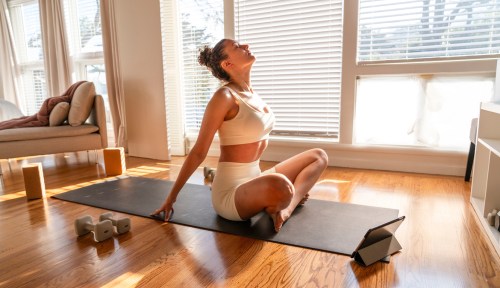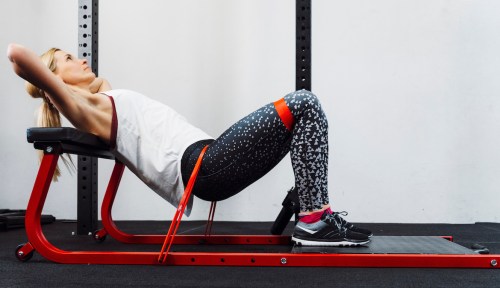Anytime I hop on a rowing machine, all the back muscles I usually ignore immediately start screaming at me to quit, and within a few minutes, my legs join the pity party. Clearly, an indoor rowing workout can get a whole bunch of our muscles firing. But does rowing “count” as strength training?
Well, despite that achy and sore feeling I typically wake up with the next day, rowing is not quite the same as a dedicated session in the weight room. To dig deeper into exactly what this kind of workout can and can’t do for our muscle strength, I tapped a handful of experts who understand the exercise science behind both rowing and strength training. Here’s what you need to know before you skip leg day for a session on the indoor rower.
What is rowing?
Rowing is a fantastic workout for a number of reasons. One of the most impressive stats is that it can work up to about 85 percent of our body’s muscles. The motion is primarily driven by those larger lower body muscles—the glutes, hamstrings, and quads—and with the right form, your core and biceps, plus your lats, erector spinae, and rhomboids in your back will also kick in.
Yet, generally, when people get on a rower, they’re looking for a full-body cardio workout rather than a strength session, says Kelly Bernadyn, CPT, a Michigan-based group fitness instructor at Life Time clubs. That’s because, more than anything, rowing is an effective way to get your heart pumping and work on your endurance.
It can also help to build power, or the ability to produce force quickly. “Power is speed, agility, quickness, reaction time, which everybody needs as they age,” says Rachel Vaziralli, MS, director of fitness at OrangeTheory. Most forms of power training (like plyometrics) are high-impact, but if your joints need something gentler, you can replicate the same explosive intensity on the rower by focusing on pulling back super quickly on the drive portion of your strokes.
Additionally, anyone who’s ever done a rowing workout knows that proper form requires careful choreography between your upper and lower body, which provides another benefit: “It can help people improve coordination between different parts of their body and different joint segments,” says Kristie Larson, CSCS, founder of Tension, a strength training gym for women in New York City, and a former rowing instructor.
What is strength training?
The truth is, strength training is a fairly broad term. “Especially now, I feel like it's being used to kind of cover a variety of different things,” Vaziralli says. As more of us grow more aware of how important strength work is for maintaining muscle mass and bone density as we age, the phrase “strength training” is being thrown around to cover anything that challenges our muscles.
Traditionally, however, it’s defined as exercise that forces our muscles to contract against some form of resistance, “whether that be the resistance of gravity during body weight exercises or actually moving an external load,” Larson says.
Vaziralli says strength training normally has one of two goals: Increasing absolute strength (meaning, the maximum amount of weight you can move in one rep) or hypertrophy (growing muscle mass). “But it can also mean muscular endurance, which is how long can I sustain a particular movement over time,” Vaziralli says. And this is where rowing can come in…
How rowing can help build strength
We work our bodies differently on a rowing machine than we do in the weight room. It helps to think about rowing in comparison to what Larson points out is the somewhat similar hinging motion of a deadlift: “We're just taking the hinge and turning it on a different plane, a different relationship to gravity,” she says. While you’d typically do maybe six to 12 reps in a set of deadlifts when you’re focused on building muscle, a rowing workout will usually involve dozens if not hundreds of strokes. That means the load will be far lower to get through all those strokes, so you end up working on that muscular endurance, not training the muscles to move heavy loads or increase that absolute strength.
Yes, rowing machines do offer resistance, a key component of strength training. But there’s a relatively low upper limit, so we can’t follow a dedicated progressive overload strategy of incrementally increasing that resistance the way we can by lifting heavier and heavier weights.
That means that how much strength you can build through rowing really depends on how fit you are to begin with. If someone who doesn’t work out much starts to regularly hop on the rowing machine and use their muscles in a new way, they’re probably going to see some strength gains. “Whereas somebody who's generally really active, they'll see less of a muscle-building effect,” Vaziralli says. However, even newbies will see their strength perks plateau after just a few weeks since there’s no way to boost that resistance further and further.
The bottom line? “Consider rowing part of your cardiovascular training, not as part of your strength training,” Larson says. “Similar to running or swimming, yes, the muscles are working. They're going to feel challenged. But we're not going to get the same benefits of increasing lean muscle mass that we find with strength training.”
How to get the most out of your rowing workout
If you’re absolutely determined to eke out as much of a strength boost as you possibly can on a rowing machine, there are a couple of strategies you can leverage. For starters, Bernadyn has clients lower the stroke rate to just about 16 to 24 strokes per minute. “That forces that resistance to settle down so it almost feels like a fresh pull every time,” she says, explaining that the first stroke always feels the hardest because there’s no momentum going in the flywheel yet.
She also suggests aiming for higher wattage, which measures the amount of power you’re applying per stroke. “The higher the wattage, the harder you're pressing into those footplates with your feet, the stronger you’re pulling,” she says.
Because you’re putting in a higher effort level on each stroke, this might mean you’re only rowing 100 meters or a couple minutes at a time. “The slower that stroke rate, the harder you're driving off the foot plates, the less likely that you're able to last nearly as long as if you were just coasting through that row,” she says.
No matter how you approach the rower, though, make sure you’re rowing with proper form to get the most effective—and safest—workout you can on the machine. “If somebody's a novice, I strongly encourage looking up row classes or getting a session from somebody experienced in rowing,” Bernadyn says.
But at the end of the day, if your ultimate goal is to build strength, you’ll want to do more than just row. “If the only thing you have available is a rower, then using that rower is the best choice you have. But if you can incorporate strength training, you'll set yourself up for more success,” Bernadyn says.
The rower is really designed as a cardio machine, and that’s how it will serve you best. Which is nothing to sneeze at since, as much as people talk about strength training these days, it’s also important to look after our heart health. “You still need to increase your VO2 max, which is indicative of living a longer life,” Vaziralli says. “And that you're only going to get from cardiovascular training.”
Sign Up for Our Daily Newsletter
Get all the latest in wellness, trends, food, fitness, beauty, and more delivered right to your inbox.
Got it, you've been added to our email list.









